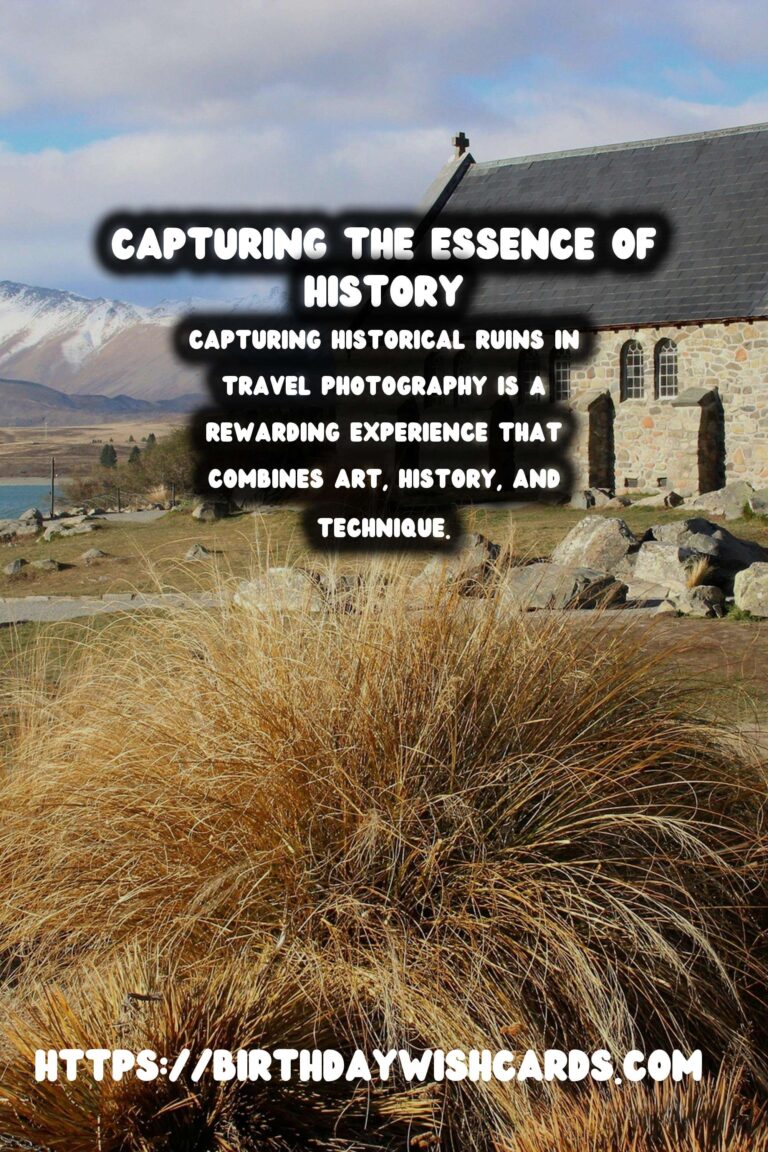
Exploring historical ruins offers a unique opportunity to step back in time and connect with ancient civilizations. As a travel photographer, capturing the essence of these sites is both an art and a skill. This guide will provide you with essential tips and tricks to enhance your travel photography journey, especially when visiting historical ruins.
Understanding the Historical Context
Before you even pick up your camera, it’s crucial to understand the historical significance of the site you’re visiting. Researching the history and cultural importance of the ruins can provide you with a deeper appreciation and allow you to capture images that tell a story. Knowing what events took place here or what architectural features are unique will help frame your shots more meaningfully.
The Best Time for Capturing Images
Lighting plays a significant role in photography, and this is especially true for outdoor locations like historical ruins. The golden hour, which occurs just after sunrise and before sunset, offers soft lighting that can enhance textures and bring out the details in stone and architecture. If possible, visit the site during these times to capture the best images.
Framing and Composition
Great composition can turn an ordinary photo into a remarkable one. Use natural lines and shapes in the ruins to guide the eye through the image. Incorporate elements like arches, columns, and pathways to add depth and perspective to your shots. Using the rule of thirds can also help in creating balanced and engaging compositions.
Equipment and Lens Selection
The right equipment can make a significant difference in capturing historical ruins. A wide-angle lens is ideal for capturing the grandeur of the structures and their surroundings. If you’re interested in details, bring a macro lens to focus on textures and carvings that are often rich in history. A tripod is also essential for steady shots in low light conditions.
Capturing the Details
When photographing historical ruins, details can often tell a story of their own. Focus on intricate carvings, weathered stones, and other unique features. These elements highlight the craftsmanship of the era and provide a more intimate glimpse into the past.
Incorporating People
Add a human touch to your photos by including people in your shots. This can provide scale to the massive structures and add a sense of life to the ruins. Be mindful of the culture and local customs when taking photos of people, as sensitivities may arise.
Playing with Shadows and Light
Shadows can add drama and depth to your photos. Experiment with different lighting conditions to see how shadows play across the surfaces of the ruins. Whether you’re highlighting the intricate detail of a sculpture or the rugged outline of a piece of architecture, light and shadow can create compelling compositions.
Respecting and Preserving Heritage
Remember, historical ruins are precious and irreplaceable. Always follow local guidelines and rules for photography. Avoid using flash or any other technique that might damage the relics. Respect the site and its cultural significance, preserving the beauty for future generations.
Edit Thoughtfully
Once you’ve captured your images, thoughtful editing can enhance their beauty. Adjust contrast, brightness, and saturation to bring out the best in your photos. However, maintain the authenticity of the site by avoiding over-editing, which can distort the historical significance of the ruins.
Conclusion
Capturing historical ruins in travel photography is a rewarding experience that combines art, history, and technique. By understanding the history, respecting the site, and using the right techniques and equipment, you can create images that not only capture attention but tell a story that spans centuries. Happy photographing!
Exploring historical ruins offers a unique opportunity to step back in time and connect with ancient civilizations. Capturing historical ruins in travel photography is a rewarding experience that combines art, history, and technique. 
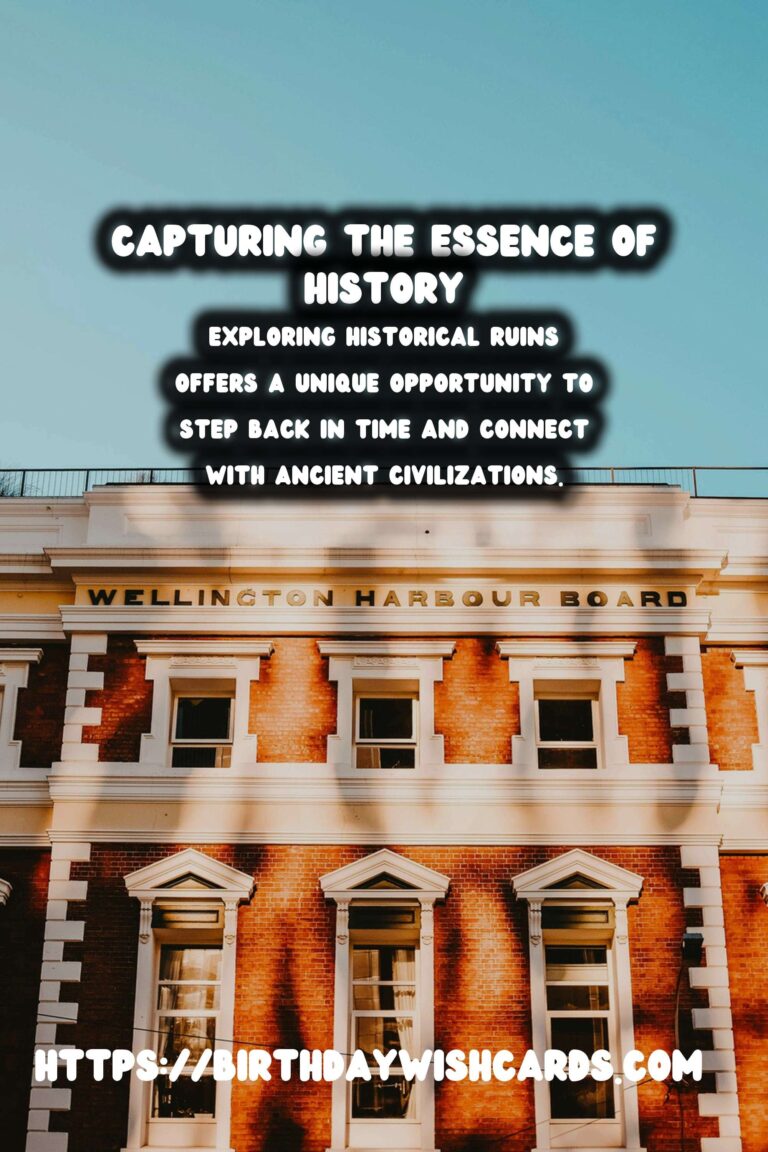
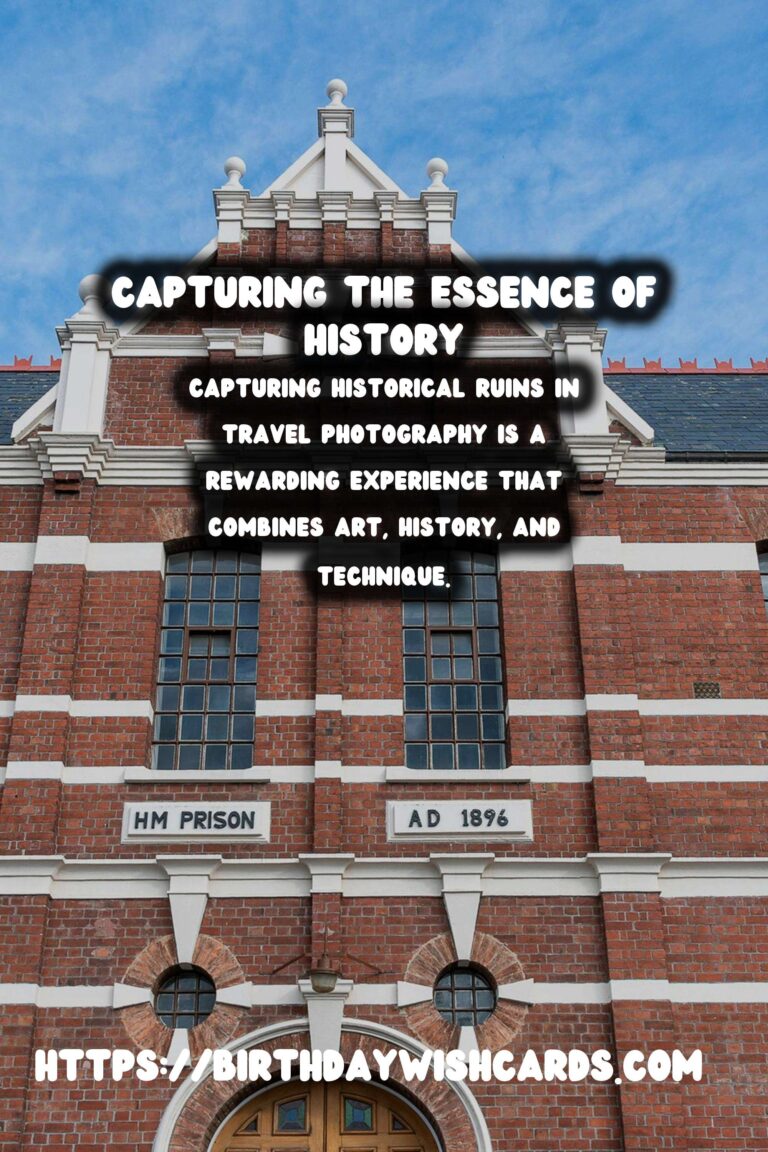
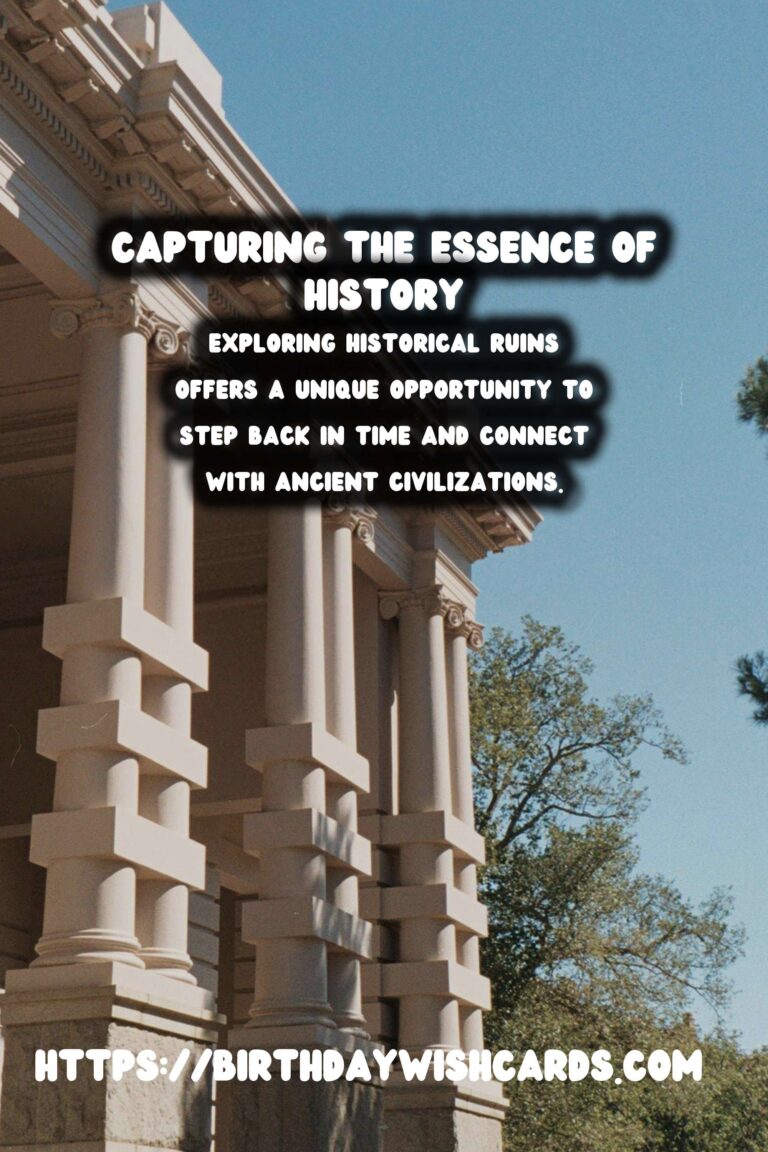
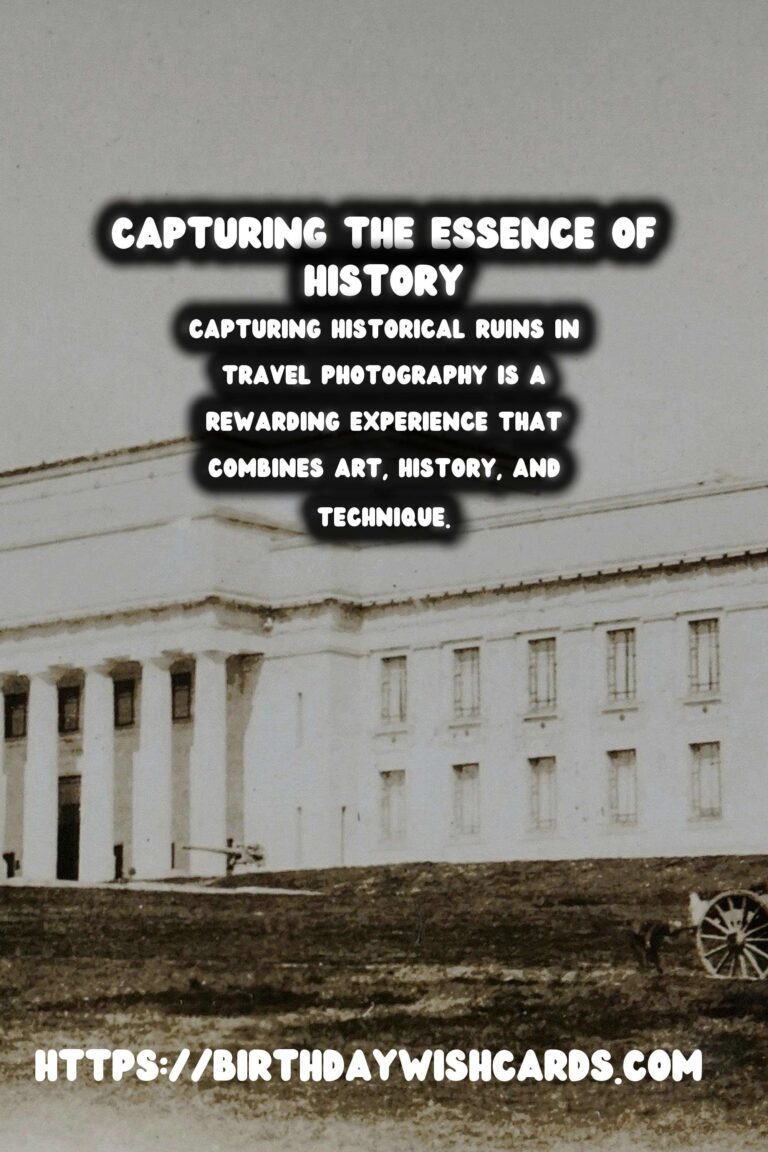
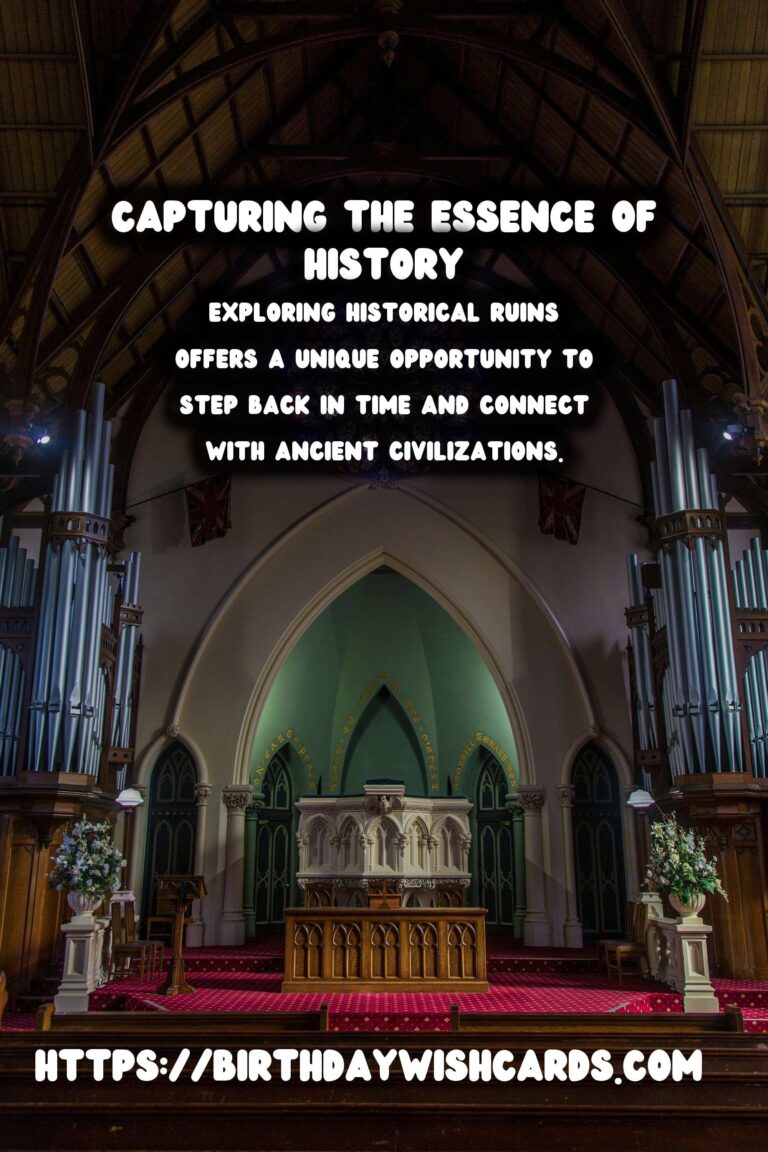
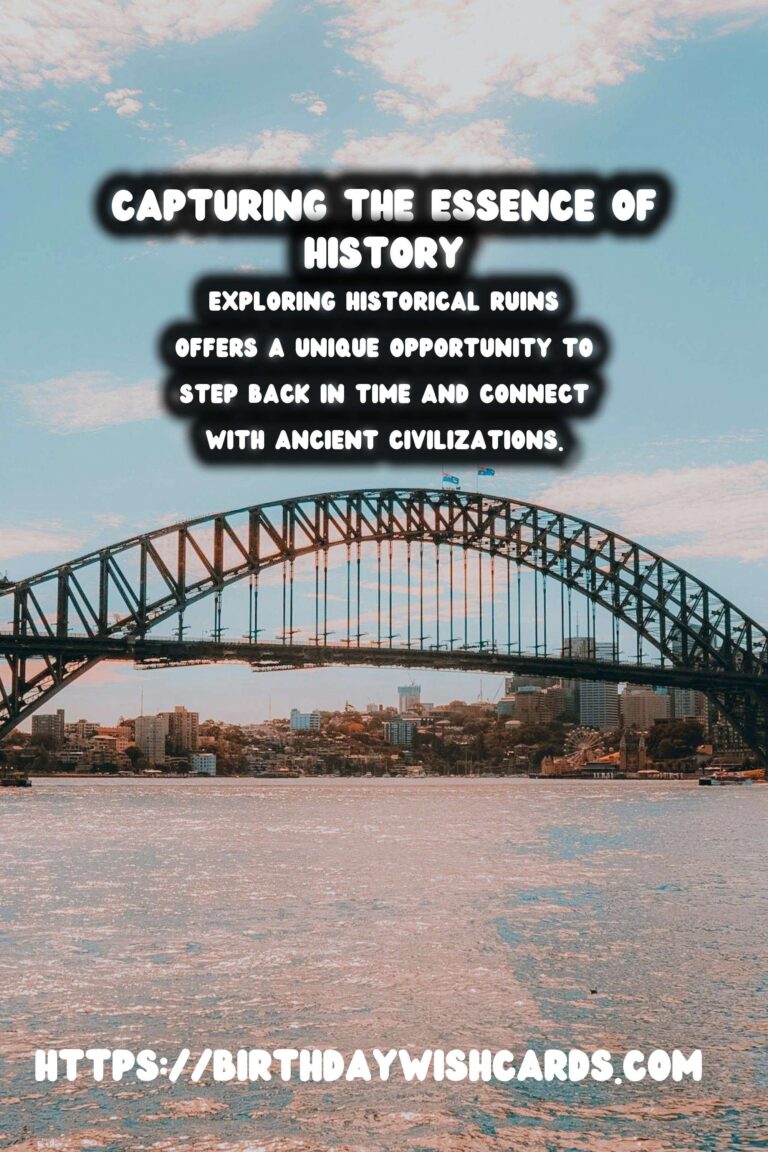
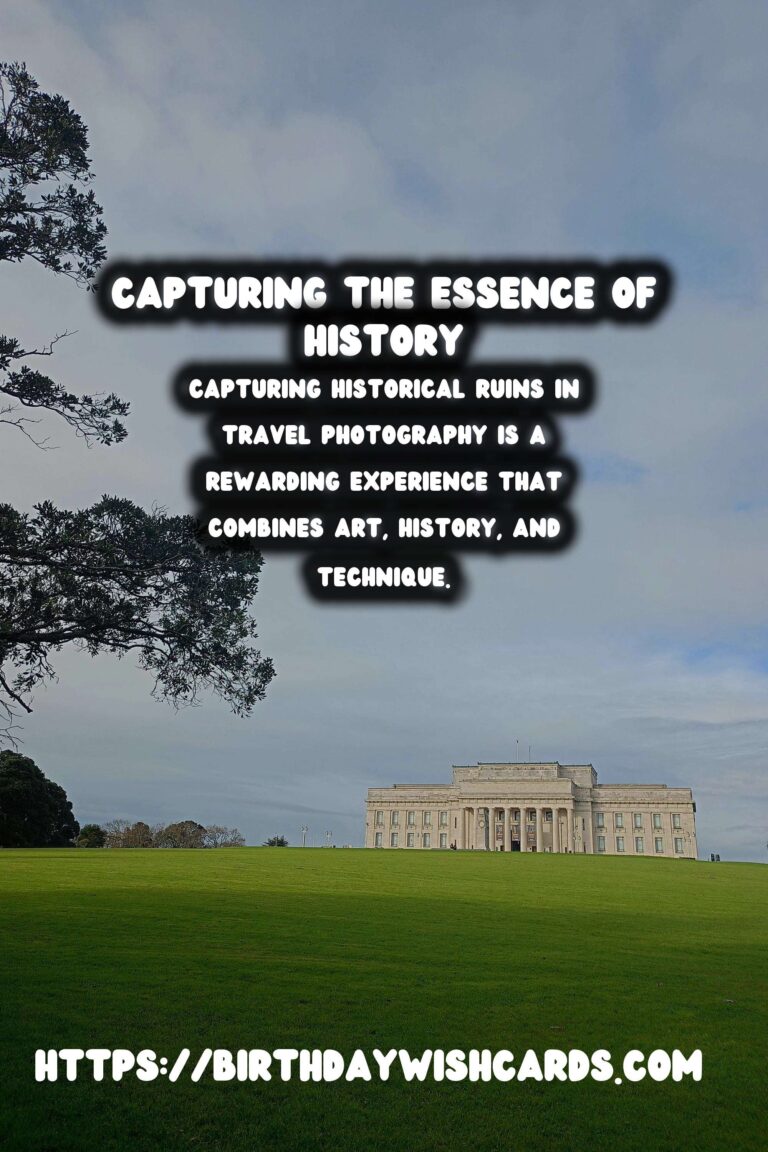
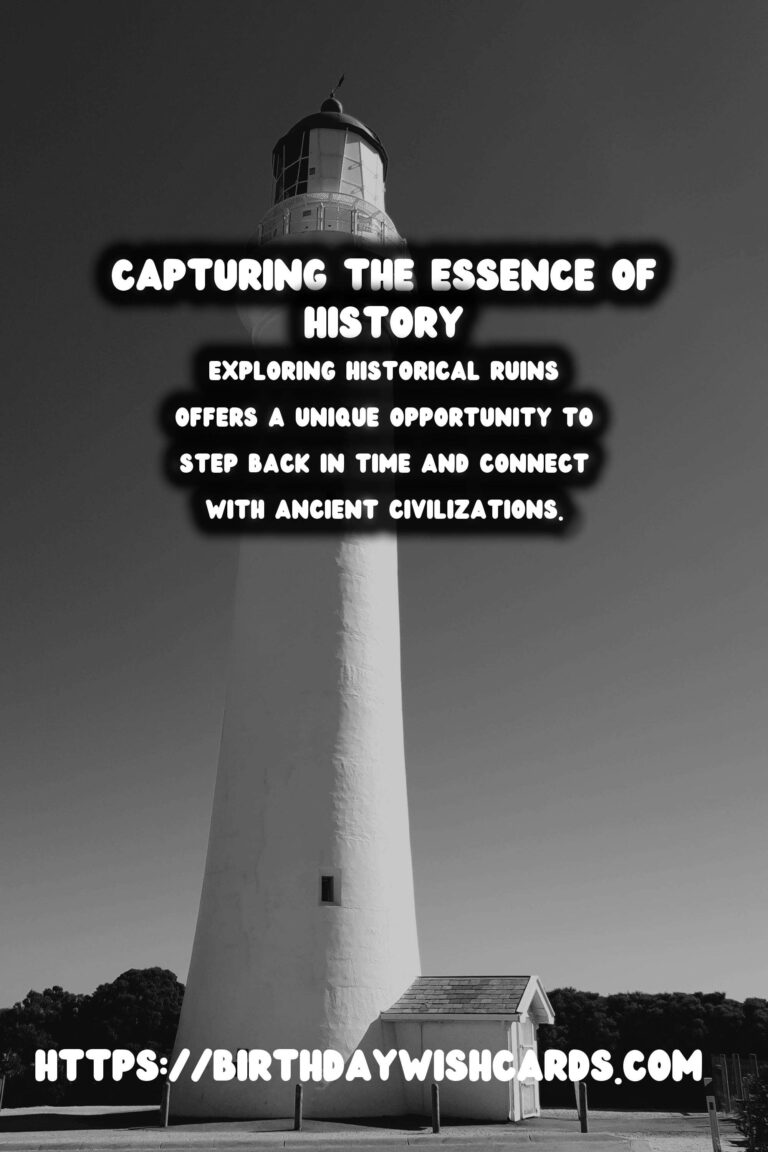
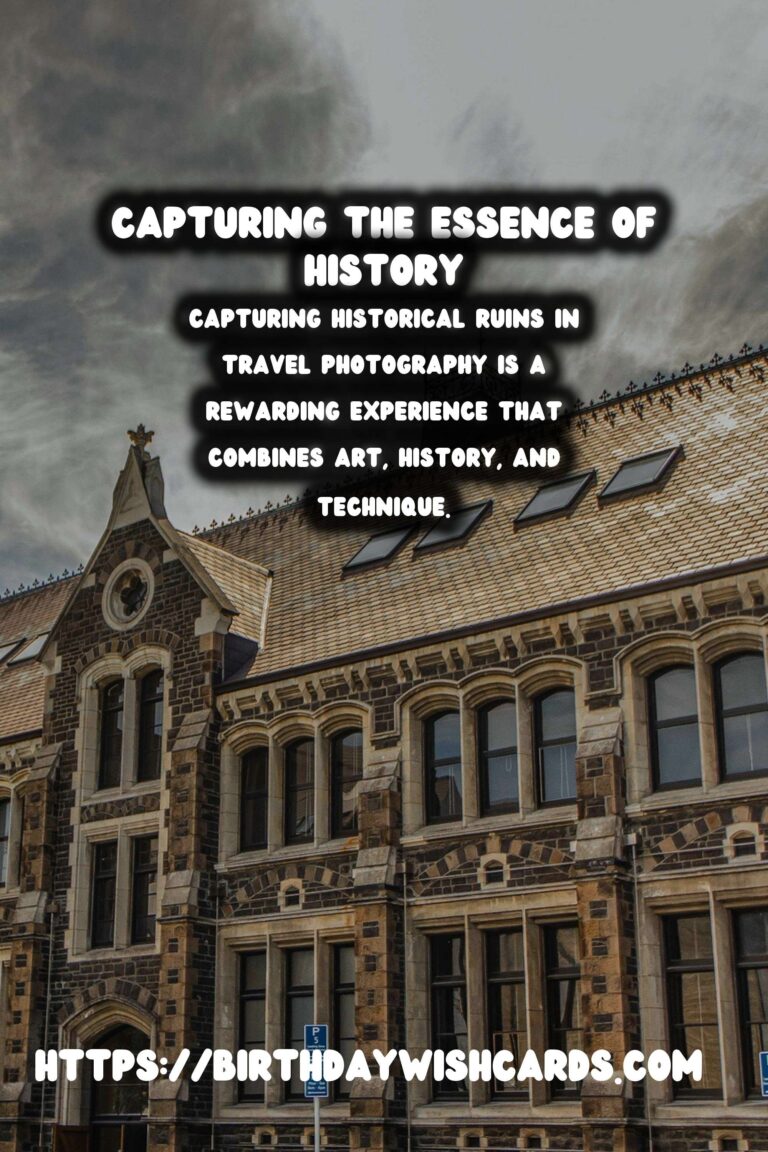
#TravelPhotography #HistoricalRuins




